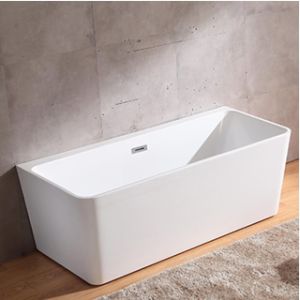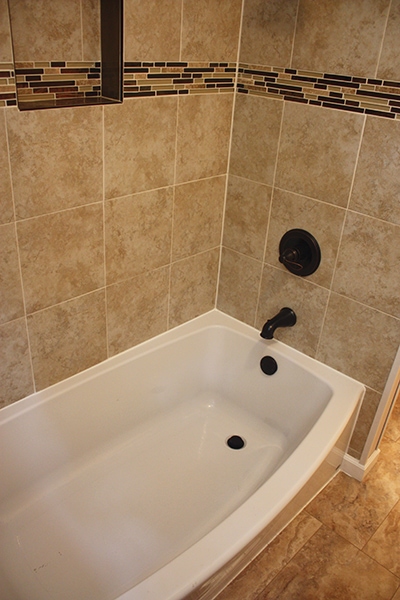What are your opinions about How to Install a Bathtub Yourself?

Setting up a bathtub isn't specifically brain surgery, however it does require strong plumbing, carpentry, and occasionally, tiling abilities. Replacing an old bath tub with a new one is additionally a moderately difficult job. If the old tub is easily accessible, the task can move immediately; if you need to open up a wall to remove the old tub and position the new tub, the task is much harder. In either situation, the job is within a house handyman's abilities, although you will certainly require a helper to leave the old tub and embeded in the brand-new one. See to it you have actually certified yourself for the job and fit attempting it. Instead of employing a specialist to take over a halfway-completed job, it is better to take into consideration using one before you begin. Chances are you may need a professional plumber to make tube links.
This article will aid you mount a brand-new bathtub in your restroom if you have already gotten a brand-new tub and do not need to change the setup of your previous water system pipes.
Your devices as well as product checklist should make up the following:
Planning for the Setup
To start with, the sustaining framework provided with the bathroom should be fitted (if called for) according to the supplier's instructions. Next off, fit the faucets or mixer to the bath tub. When suitable the tap block, it is very important to make certain that if the tap comes with a plastic washing machine, it is fitted in between the bath and also the taps. On a plastic bathroom, it is also reasonable to fit a sustaining plate under the taps device to stop stress on the bathtub.
Fit the flexible faucet ports to the bottom of the two faucets using 2 nuts and olives (occasionally provided with the bathtub). Fit the plug-hole outlet by smearing mastic filler round the sink electrical outlet hole, and after that pass the outlet via the hole in the bathroom. Use the nut provided by the maker to fit the plug-hole. Analyze the plug-hole electrical outlet for an inlet on the side for the overflow pipeline.
Next, fit completion of the flexible overflow pipe to the overflow electrical outlet. Afterwards, screw the pipe to the overflow face which ought to be fitted inside the bath. See to it you make use of all of the supplied washers.
Link the catch to the bottom of the waste electrical outlet on the bathtub by winding the thread of the waste outlet with silicone mastic or PTFE tape, as well as screw on the trap to the outlet. Connect the bottom of the overflow tube in a similar manner.The bathroom need to currently prepare to be suited its final position.
Removing Old Taps
If you need to change old taps with brand-new ones as a part of your installation, after that the first thing you ought to do is separate the water supply. After doing so, turn on the faucets to drain any type of water staying in the system. The procedure of getting rid of the existing faucets can be fairly problematic as a result of the restricted accessibility that is often the instance.
Use a container wrench (crowsfoot spanner) or a tap device to undo the nut that links the supply pipelines to the taps. Have a towel ready for the continuing to be water that will come from the pipelines. Once the supply pipes have actually been removed, utilize the very same device to loosen the nut that holds the faucets onto the bath/basin. You will need to quit the solitary faucets from transforming during this procedure. As soon as the faucets have been removed, the holes in the bath/basin will certainly need to be cleaned up of any kind of old sealing substance.
Before going on to fit the brand-new taps, compare the pipe connections on the old faucets to the brand-new faucets. If the old faucets are longer than the brand-new faucets, after that a shank adapter is required for the new faucets to fit.
Mounting the Bath tub
Using the two wood boards under its feet, put the tub in the called for setting. The wooden boards are useful in evenly spreading the weight of the bath tub over the location of the boards instead of concentrating all the weight onto 4 little points.
The following goal is to make certain that the tub is leveled all round. This can be attained by inspecting the level as well as adjusting the feet on the bath tub until the level reviews level.
To set up faucets, fit all-time low of the outermost flexible tap adapter to the appropriate supply pipe by making a compression sign up with; then do the exact same for the various other faucet.
Switch on the water system and also check all joints and new pipework for leaks as well as tighten them if needed. Load the bath tub as well as additionally examine the overflow electrical outlet and the normal electrical outlet for leakages.
Ultimately, deal with the bathroom paneling as defined in the maker's user's manual. Tiling and sealing around the tub ought to wait until the bathtub has actually been made use of at least once as this will certainly resolve it right into its final setting.
Suitable New Taps
If the tails of the brand-new taps are plastic, then you will need a plastic adapter to stop damages to the thread. One end of the adapter fits on the plastic tail of the faucet as well as the other end gives a link to the existent supply pipelines.
If you need to fit a monobloc, after that you will call for minimizing couplers, which connects the 10mm pipe of the monobloc to the basic 15mm supply pipeline.
Next, position the faucet in the mounting hole in the bath/basin making certain that the washers are in location in between the faucet and the sink. Protect the faucet in position with the manufacturer offered backnut. When the faucet is safely in position, the supply pipelines can be attached to the tails of the faucets. The faucets can either be connected by using corrugated copper piping or with normal tap connectors. The former type should be linked to the faucet finishes initially, tightening only by hand. The supply pipelines can later on be connected to the various other end. Tighten up both ends with a spanner after both ends have actually been connected.
Tiling Around the Tub
In the location where the bathroom meets the ceramic tile, it is necessary to seal the joins with a silicone rubber caulking. This is very important as the installation can relocate sufficient to crack a rigid seal, causing the water to penetrate the wall in between the bathroom as well as the tiling, causing problems with dampness and also possible leakages to the ceiling listed below.
You can choose from a range of coloured sealants to assimilate your components and installations. They are sold in tubes as well as cartridges, and also are capable of sealing voids as much as a size of 3mm (1/8 inch). If you have a larger space to fill, you can fill it with spins of drenched paper or soft rope. Remember to constantly load the tub with water before securing, to allow for the activity experienced when the bathtub is in use. The sealant can split rather very early if you do not take into account this movement before sealing.
Additionally, ceramic coving or quadrant ceramic tiles can be used to border the bathroom or shower tray. Plastic strips of coving, which are easy to use and also cut to size, are also quickly readily available on the marketplace. It is a good idea to fit the ceramic tiles using water-resistant or water-proof sticky and grout.
Bathtub Installation
How Important Is A Bathtub To Your Home?
High-quality baths, showers, and other bathroom updates are necessary when considering a smart investment in your home. It’s a room that you go to every day and one that is constantly being used by guests.The bathroom is one of the top trafficked rooms in a home and also one of the most valuable in terms of home resale.
Install Piping Before Tub
You will be using your existing drain and waste vent system, but pipes required include the hot and cold water supply lines and a pipe leading to a shower head. A mixing valve and shower head are also needed. Air chambers may be required.
Position the Tub
Lower the tub into place so that the continuous flange fits against the wall studs and rests on 1’x4' or 2’x4' supports. Anchor the tub to the enclosure with nails or screws inserted through the flanges into the studs.
NOTE: Remember, bathtubs and shower stalls may require support framing. A bathtub filled with water is extremely heavy, so check building codes and framing support before installing the tub.
Assemble Drain Connections
Assemble the bathtub drain connections by connecting the tub overflow with the tub drain above the trap, not beyond it. The trap will have a compression fitting that screws over the arm of the overflow assembly.
Place a Pipe For the Shower Head
First, locate a brass female threaded winged fitting and attach it to a framing support via a screw or a nail. Then run a pipe up the wall for the shower head. Sweat or solder the other side of the brass fitting to the top of the pipe.
Attaching Hot and Cold Water Lines
Attach your water lines for both hot and cold by sweating these directly into the hot and cold ports of the mixing valve. The mixing valve will be how water enters the tub’s system, not by the pipes themselves.
Install the Spout
Extend a piece of 1/2 inch pipe, or whichever length is specified in the manufacturer’s instructions, for the tub spout. Sweat on a male threaded fitting at the end of the pipe or use a brass nipple of the proper length and a 1/2 inch cap.
NOTE: At this point you should have your rough-in plumbing work inspected before proceeding further.
Check For Leaks
Restore the water pressure and check the drain connection and the supply pipes for any sign of leaking.
estore the Bathroom Wall
Replace the wall with moisture-resistant drywall as a base for your wall covering. Seal the joints between the wall and your new tub with silicone caulk as protection against water seepage.
https://www.berkeys.com/2016/12/02/bathtub-installation-dallas/

I am very fascinated with How to Install a Bathtub and I hope you enjoyed the entire blog posting. Remember to set aside a second to distribute this page if you enjoyed reading it. Thanks a lot for your time invested reading it.
Ring for results!